From the first hours of the campaign of the new Final Fantasy Tactics: The Ivalice Chronicles, it was clear what the title of this review would be. Nostalgia Perfected sums up exactly what Square Enix's new release represents as a remaster of the 1997 PlayStation One classic.
The game doesn't attempt to reinvent the formula. Compared to War of the Lions, released on the PSP, it offers even fewer new features in terms of extra content, remaining almost entirely faithful to the original title. The absence of jobs like the Dark Knight or guest characters like Balthier may frustrate some fans. Still, the improvements in localization, narrative, and gameplay make this version practically a must-have for veterans who followed Ramza Beoulve in the late 1990s and for new players who will now have their first opportunity to explore Ivalice.
Technical Details
*Genre: Tactical RPG
*Developer: Creative Studio III
*Publisher: Square Enix
*Release Date: September 30, 2025
*Platforms: PlayStation 5, PlayStation 4, Nintendo Switch, Nintendo Switch 2, Xbox Series X|S, Steam
As beautiful as the day we first met
Few games have aged as well as Final Fantasy Tactics. Over 25 years after its release, the game still maintains a passionate community that continues to make mods, difficulty rebalances, and preservation projects on online forums and Discord.
Much of this impact comes from its plot: director and screenwriter Yasumi Matsuno has stated that FFT is a game about social inequality, couched in a story of political struggles and aristocracy, and born from a time of great inequality in Japan. Matsuno, in fact, considers the title as necessary today as it was when first released.
At the center of this narrative are Ramza Beoulve, a young man from a noble family who ends up branded a heretic, and Delita Heiral, a commoner who rises to the rank of hero. Childhood friends, they are separated by the harsh reality of social divisions and follow different paths, but with the same goal: to confront an unjust system from its roots.
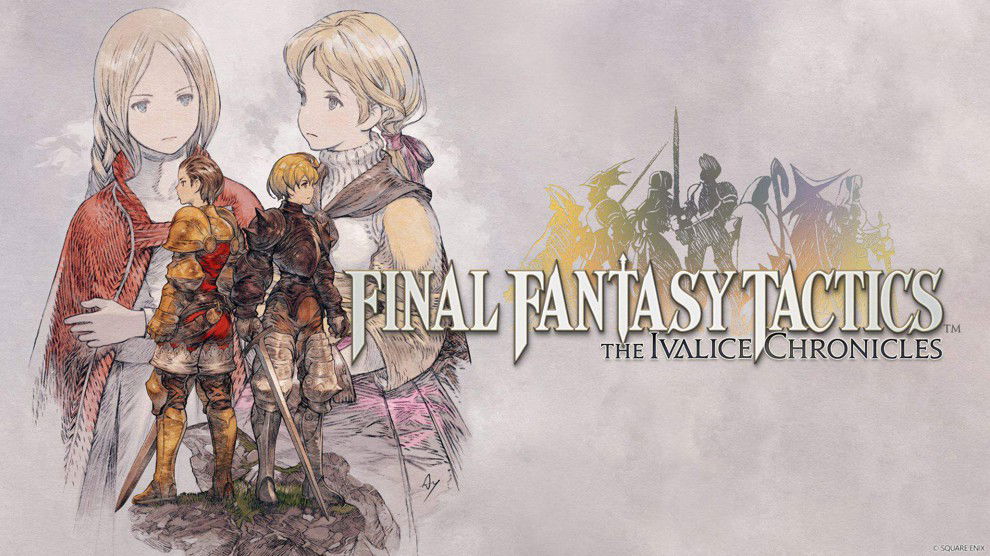
The relationship between the two is one of the game's greatest strengths. Matsuno builds a solid duality, in which each choice exposes the wounds of an unequal society, without reducing them to direct enemies or clichéd roles. Ramza and Delita share scars but react differently to them, creating one of the most sophisticated and well-written narratives ever seen in the Final Fantasy franchise.
Around them, a story of betrayal, politics, and ambitions for the throne unfolds, permeated by supernatural elements typical of the series. The result is a social and even religious critique that maintains a foundation on a grounded medieval setting, unlike other titles directly inspired by the game—such as Final Fantasy XVI—which relied more heavily on fantasy.
Every improvement is welcome, but the essence is still there
Playing the original title on PlayStation was a unique experience. Who hasn't lost an entire save game due to not thoroughly preparing for one of the famous Castles? These moments ended up shaping a generation, which learned to create "extra saves" in every game.
But times have changed, as have player expectations. The Ivalice Chronicles modernizes the experience without sacrificing its essence. Despite the various improvements, what made so many players fall in love with the title remains there, almost intact.
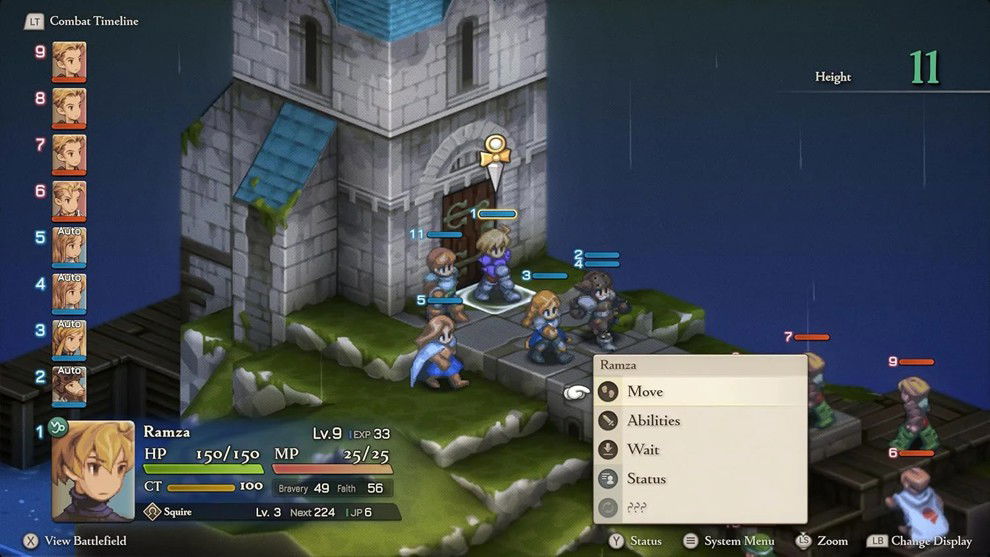
Among the improvements, the menu interface is more intuitive. Now, each command has detailed explanations, without the need for extra buttons, facilitating learning and decision-making. It's also possible to undo a character's last action, a feature that avoids typical frustrations from the original game, such as moving a unit to find out it's unable to attack because you miscalculated the reach of their skill or magic.
Another major addition is the visible turn order on the screen, similar to the battle system in Final Fantasy X. In the original, players had to manually calculate when an action would be executed based on the CT bars, which hindered the timing of some attacks or the sense of urgency between healing their character and trying to deal a little more damage against a boss. With the turn list visible, strategic planning is more precise and less frustrating, while still mantaining the challenges.
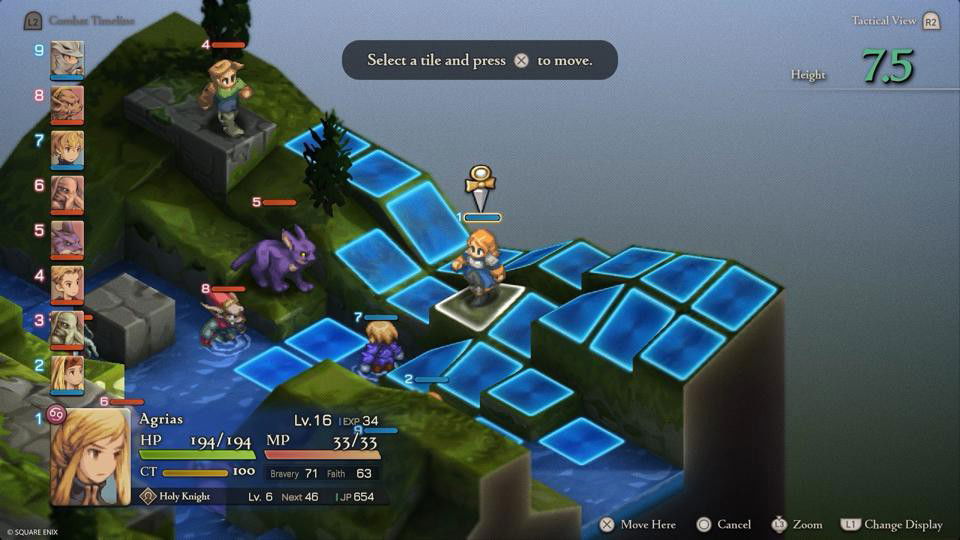
The party and equipment menus have also been redesigned, with new illustrations, job explanations, and minor balance adjustments. Still, the spirit of the game remains: you can create incredibly powerful characters with creative combinations of jobs and skills. For this review, for example, I retested the classic Ramza's unique build as a Monk and using Squire as a secondary skill set, which makes him practically self-sufficient in combat, to the point of even tackling most stages on his own if built correctly.
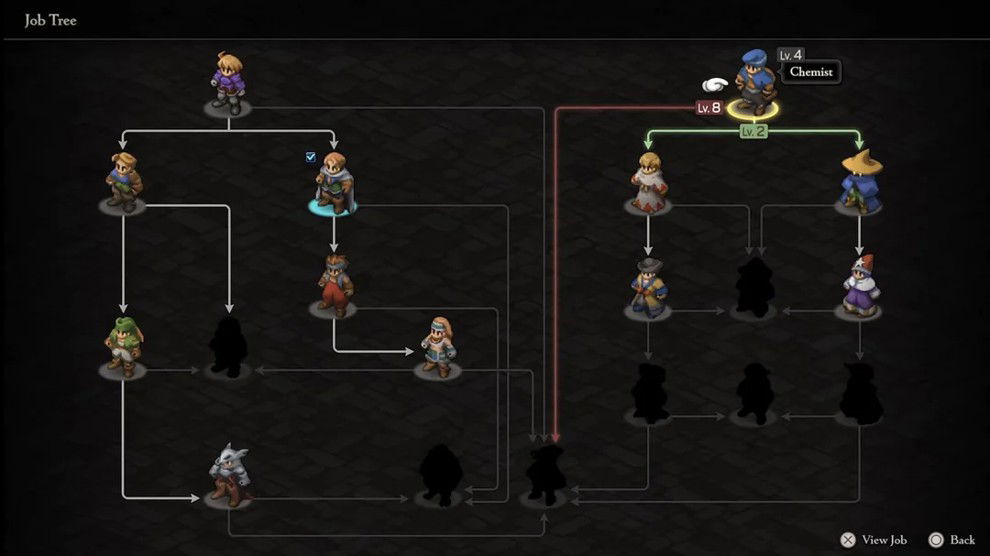
This freedom, however, requires grinding. Spending hours leveling characters may sound tiring to some, but it's a fundamental part of Final Fantasy Tactics' charm. With only a minimum of five units per battle, you can consider hundreds of combinations between jobs, skills, and equipment that maintain the game's replayability and make it so fun. Before you know it, you've already spent three hours fighting monsters and watching a character gain levels and unlock new abilities that will make them an essential asset to your army.
Another highlight is the inclusion of three difficulty levels. A more accessible option allows you to focus solely on the story, while the standard mode offers the classic experience with quality-of-life improvements that ultimately make the experience easier compared to the original game. The tactical mode adds an extra challenge, geared towards veterans who want to master every aspect of combat, and expands the game's already extensive replayability.
Improved Graphics and Hit-and-Miss Voice Acting
Square Enix has faced criticism for other remasters, such as Final Fantasy X HD, where the discrepancy between redesigned main characters and dated-looking supporting characters generated a sense of strangeness and numerous memes, and the company repeated the same mistake with Final Fantasy Type-0 HD. In The Ivalice Chronicles, the approach was more consistent: the studio opted for an artistic direction that preserves the original style rather than trying to bring it closer to more modern visual standards.
At first glance, the graphics may seem modest or dated, especially when compared to contemporary titles or even the versions already released for iOS and Android. However, the new lighting and shadowing of the environments make a practical difference, and the transitions during some battles gain a dynamism that was missing in the original game.
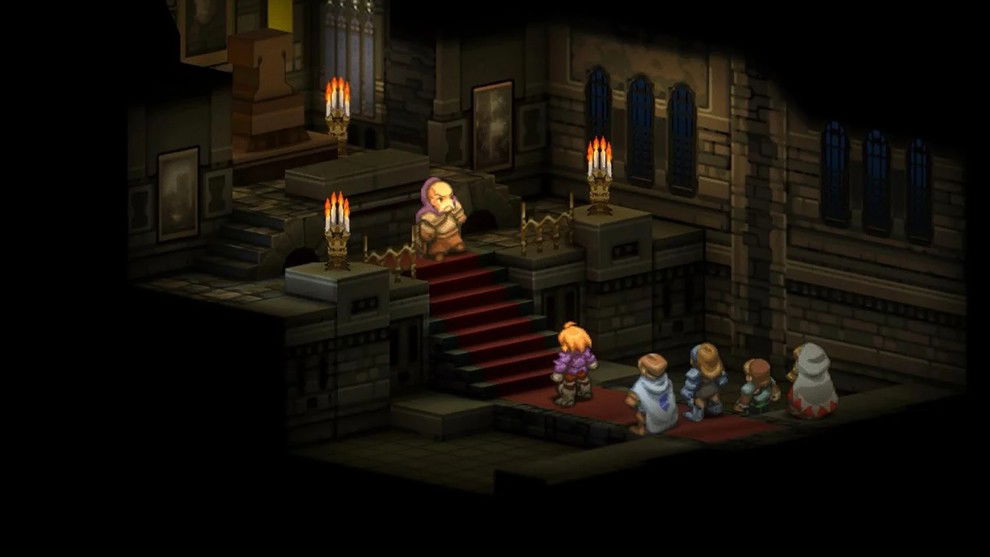
Still, there are noticeable technical limitations. A where dialogue boxes will show up creates an effect that may bother players accustomed to cleaner remasters. The color palettes sometimes end up conveying the feeling of excessive filtering, taking away some of the visual clarity one would expect from an awaited remaster.
The voice acting—the main new feature of this version—adds so much depth to the story, but it's not without its critics. In moments of greater urgency, the actors' performances strengthen the immersion and bring the characters to life, but it's often mixed with situations where there are dissonances between their tone and the events unfolding on screen.
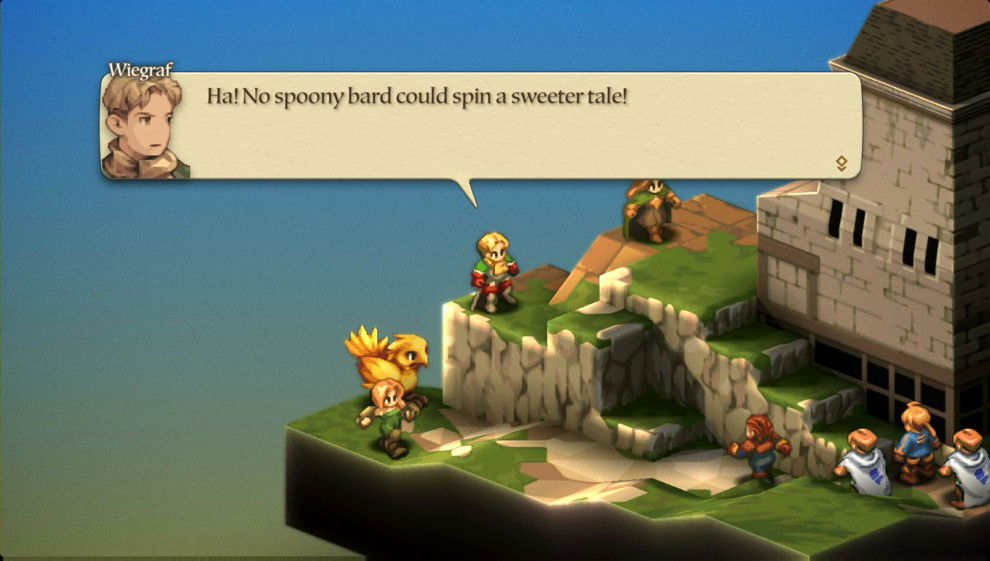
To worsen things, mixing issues compromise part of this improvement. In some sequences, the voices seem to "float" above the soundtrack, lacking proper integration with the environment, as if they had been inserted without enough acoustic or post-recording treatment.
The result is a paradox: the addition of voice acting expands the narrative and creates a new experience for those who have played Final Fantasy Tactics dozens or even hundreds of times, but technical inconsistencies prevent this feature from reaching its full potential. Square Enix made the right decision in introducing significant improvements but overlooked details, especially in the sound mixing, that deserved better.
Pros and Cons
Pros
Cons
Verdict
Final Fantasy Tactics: The Ivalice Chronicles is, in many ways, the definitive version of the 1997 classic. While remaining faithful to its origins, it features specific improvements that update the experience for a contemporary audience without sacrificing the charm that made it one of the greatest tactical RPGs in history.
It lacks additional content and has a few technical issues, especially the audio mix, which could have received more attention. However, the combination of gameplay tweaks, improved graphics, and voice acting delivers an experience that honors the memory of the original game and opens the doors of Ivalice to a new generation of players.
SCORE: 9.5/10











— Comments 0
, Reactions 1
Be the first to comment